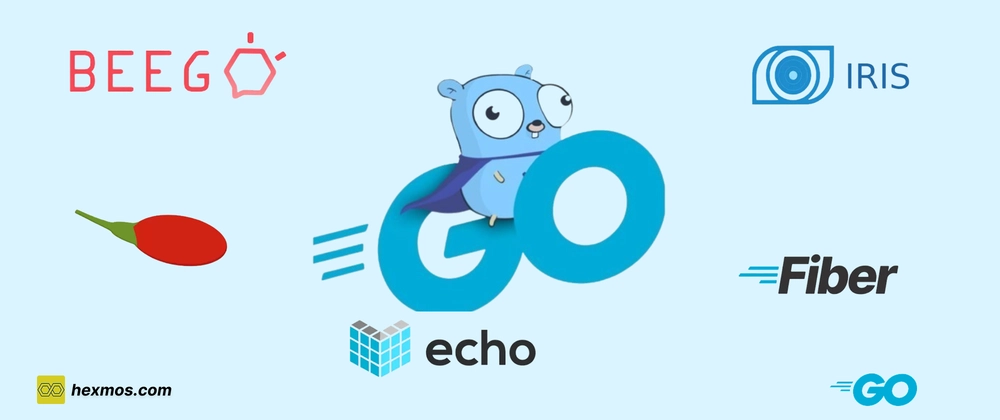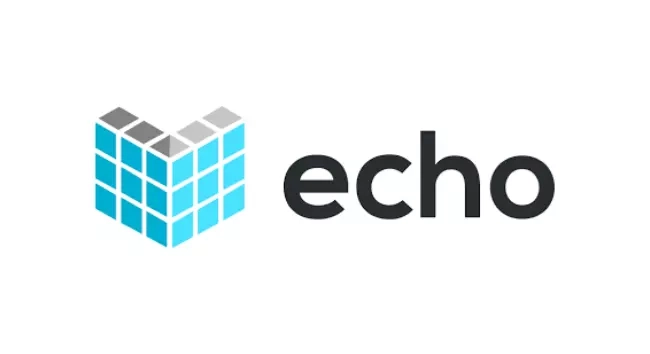If you're beginning backend development with Go and wondering which framework to choose, in this blog we'll explore some popular frameworks in the Go ecosystem, outlining their key features and performance metrics with practical examples to help you make an informed choice.
Go, created by Google, has become a favorite in the backend world thanks to its simplicity, speed, and built-in concurrency through goroutines and channels. Its compiled nature allows for highly performant applications that often outperform interpreted languages, making it an excellent choice for robust backend systems.
While Go’s built-in net/http package is powerful, leveraging a web framework can streamline development. Frameworks provide essential tools for routing, data handling, and middleware integration—allowing you to concentrate on designing unique application logic rather than reinventing foundational components. Think of it as using a pre-assembled chassis for a car, offering a reliable platform on which to build advanced features.
This guide offers a detailed technical analysis of framework options in the Go ecosystem, examining performance, scalability, and integration ease to ensure you select the right tool for your next project.
Framework Deep Dive: Features
With a clear overview of the top frameworks, let's dive deeper into each one. In the following sections, we'll examine the unique features and core functionalities of each framework, providing insights into what makes them stand out in the Go ecosystem.
Beego
Overview:
Beego is often characterized as a comprehensive, or "full-stack", framework, drawing parallels to the well-established Django framework in the Python ecosystem. It is designed to facilitate the rapid development of enterprise-grade applications and RESTful APIs by providing a wealth of built-in features.
Architecture & Design
The framework embraces the Model-View-Controller (MVC) architectural pattern, promoting a clear separation between the application's data (Model), its presentation (View), and the logic handling user input (Controller). This structure is particularly helpful for beginners, offering a clear roadmap for organizing code.
Database Integration
Additionally, Beego includes a robust Object-Relational Mapper (ORM) that simplifies database interactions. Instead of writing complex SQL queries, developers can manipulate data using Go objects while the ORM handles the translation to and from the database. It supports popular database systems such as MySQL, PostgreSQL, and SQLite.
Batteries-Included Philosophy
Beego follows a "batteries included" philosophy, offering built-in modules for managing user sessions, logging application activity, caching data for faster retrieval, handling configuration settings, and even supporting internationalization (i18n). This comprehensive feature set reduces the need to search for and integrate numerous external libraries.
Automation with Bee Tool
Moreover, Beego provides a powerful command-line tool called "Bee Tool" that automates common development tasks like creating new projects, generating code, building the application, running tests, and deploying it. This automation significantly streamlines the workflow, especially for those new to the development process.
Ideal For
Beego is an excellent choice for developers and teams looking to build robust, enterprise-grade applications quickly. It is especially suitable for those who prefer an all-in-one solution that minimizes the need for third-party libraries. With its comprehensive feature set—including built-in ORM, session management, caching, and internationalization support—Beego offers a solid foundation for developing complex applications and RESTful APIs. Beginners will appreciate the clear MVC structure and the automation provided by the Bee Tool, which simplifies many repetitive development tasks.
"Hello World" Example:
package main
import "github.com/beego/beego/v2/server/web"
type MainController struct {
web.Controller
}
func (c *MainController) Get() {
c.Ctx.WriteString("Hello, World from Beego!")
}
func main() {
web.Router("/", &MainController{})
web.Run()
}
-
Import Package: We import the
webpackage from the Beego framework. -
Define Controller: We define a controller
MainControllerthat embedsweb.Controller. -
Handle GET Request: The
Get()method handles HTTP GET requests to the root path (/). -
Write Response:
c.Ctx.WriteString()writes the "Hello, World!" message to the response. -
Register Route: In
main(), we register the router, mapping the root path to ourMainController. -
Start Server:
web.Run()starts the Beego application.
To run this:
Make sure you have Beego installed by running:
go install github.com/beego/beego/v2/server/web
Save the code as main.go and run go run main.go. Then, navigate to http://localhost:8080 in your browser.
Echo
Overview:
Echo is known as a high-performance, extensible, and minimalist framework with a focus on building microservices, APIs, and JSON web services. It is designed to maximize speed and developer productivity without the burden of unnecessary features.
Performance & Design
At its core, Echo features a highly optimized HTTP router that efficiently directs incoming requests to the appropriate handlers, minimizing dynamic memory allocation. Its minimalist design provides only the essential building blocks for web development, making it easier for beginners to grasp fundamental concepts.
API Building & Data Binding
Echo excels at building RESTful APIs by offering features like automatic data binding—which converts incoming request data (in formats like JSON, XML, or form data) into Go data structures—and data rendering for sending responses in various formats.
Middleware Support
A key strength of Echo is its flexible middleware system, which allows for seamless integration of functionalities such as logging, user authentication, and CORS management. Middleware can be applied globally, to specific route groups, or individually.
Security & TLS
One particularly helpful feature for beginners is Echo's ability to automatically handle TLS certificate installation using Let's Encrypt, simplifying the process of securing your web applications with HTTPS.
Ideal For
Echo is ideal for developers seeking a lightweight yet powerful framework for building RESTful APIs and microservices. Its streamlined design, high performance, and easy middleware integration make it an excellent choice for projects where security and speed are paramount.
"Hello World" Example:
package main
import (
"net/http"
"github.com/labstack/echo/v4"
)
func main() {
e := echo.New()
e.GET("/", func(c echo.Context) error {
return c.String(http.StatusOK, "Hello, World from Echo!")
})
e.Logger.Fatal(e.Start(":1323"))
}
-
Import Package: We import the
echopackage. -
Create Instance: A new Echo instance is created using
echo.New(). -
Define Route: A route for the root path (
/) is defined usinge.GET(). - Handle Request: The handler sends a "Hello, World!" response with HTTP status 200 (StatusOK).
-
Start Server:
e.Start(":1323")starts the Echo server on port 1323.
To run this:
Install Echo by running:
go get github.com/labstack/echo/v4
Save the code as main.go and run go run main.go. Access http://localhost:1323 in your browser.
Fiber
Overview:
Fiber draws direct inspiration from Express.js, a widely used web framework in the Node.js ecosystem. It is built on top of Fasthttp, known for its exceptional speed and low memory usage.
Routing & Performance
Fiber offers a robust and intuitive routing system that allows developers to easily define endpoints and handle various HTTP methods (e.g., GET, POST, PUT, DELETE). Its foundation on Fasthttp makes it a high-performance option for demanding applications.
Middleware & Templating
Fiber provides extensive middleware support for tasks such as logging, authentication, and data validation. It also supports various template engines for dynamic HTML content and includes built-in support for WebSockets for real-time communication.
Traffic Management
For managing traffic, Fiber offers middleware for rate limiting, ensuring your application remains responsive under heavy loads.
Continue Reading : here







Top comments (0)